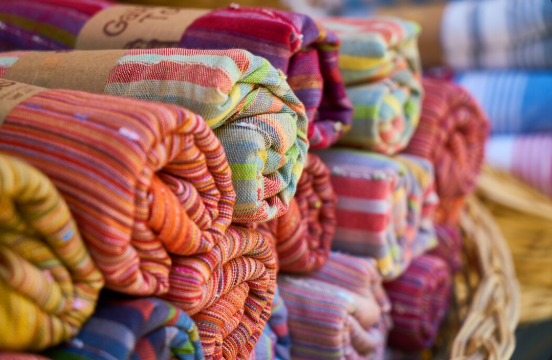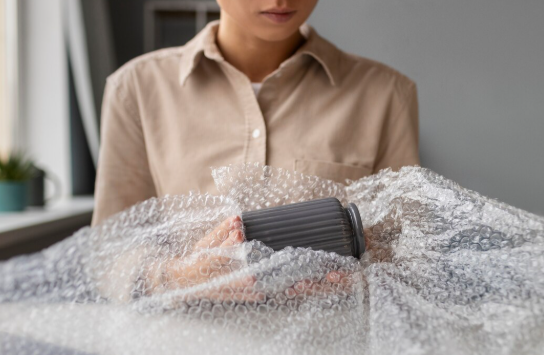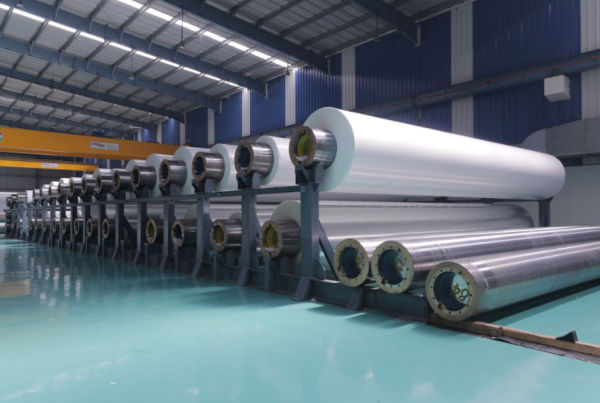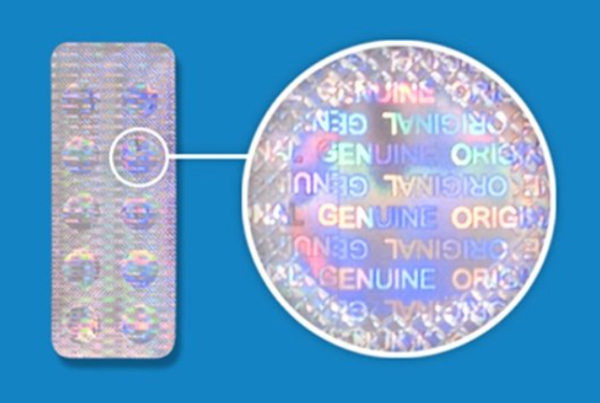In the competitive world of textiles where quality, presentation, and shelf-life matter just as much as design and fiber the choice of packaging plays a critical role. More than simply wrapping fabric, garments or finished garments, the packaging must protect the product, present the brand, and endure logistics. For brands that demand both robustness and visual appeal, specialized textile packaging films are the unsung heroes.
At the forefront of this space is Kanodia Technoplast, delivering sophisticated and high-performance packaging films tailored for textile applications.
Why Textile Packaging Needs More Than Ordinary Packaging
Textile products face multiple packaging challenges. From raw fiber bales to finished garments, packaging must handle:
- Abrasion and rough handling during transit and storage.
- Moisture, humidity and mildew risk especially when textiles are stored for long periods or shipped internationally.
- Retention of visual appeal: the packaging must reflect the brand’s quality, allowing vibrant print, clarity, and attractive finishes.
- Ease of handling: consumers expect convenience, while brands require efficient packaging lines and safe storage.
- Brand differentiation: packaging plays a silent but powerful role in brand recall and perceived value.
These requirements mean textile brands cannot rely on standard polybags alone. They need solutions that combine barrier performance, durable construction, and aesthetic flexibility.
What Textile Packaging Films Solutions Look Like in Practice
True textile packaging film solutions involve multiple layers of performance and design. A well-designed film offers:
- Barrier Protection & Mechanical Strength
Industrial-grade films built with advanced film extrusion and lamination provide resistance to tearing, puncture, and moisture ingress. Kanodia’s infrastructure features advanced 7-layer CPP and multi-layer film plants that ensure durability for demanding textile logistics. - Printability & Visual Finish
Textile brands frequently require high-quality graphics, brand messaging, gloss or matt finishes, special windows, transparent sections or metallised accents. Kanodia’s vacuum metallisation lines (up to 3.25 m wide) allow metallised and window-metallised films that combine barrier and aesthetics for premium presentation. - Lightweight & Material Efficiency
Using thinner yet stronger films helps reduce material usage, lower freight costs and ease handling all while maintaining performance. Kanodia’s innovations in thinner CPP films underscore this trend. - Customisation & Brand-Specific Options
Every textile brand has unique needs cut-sheet size, gusseting, printed artwork, re-seal options, aesthetics. Kanodia offers tailored film structures for food, FMCG and textile segments, indicating their ability to service custom film needs for textile packaging applications too. - Sustainability & Future-Ready Materials
Textile brands increasingly demand packaging that aligns with eco-goals recyclable film structures, mono-material packs, lower carbon footprint. Kanodia explicitly highlights eco-friendly multi-layer films and recyclable structures.
Why Kanodia Technoplast is an Ideal Partner for Textile Packaging
Choosing the right film provider makes a significant difference. Kanodia stands out for several reasons:
- Integrated infrastructure: From film extrusion to metallisation, lamination to printing, vertical integration ensures consistency, speed and quality.
- Technology leadership: Advanced machinery, wide metallisation capability, high capacity (>18,000 MT annually) gives textile brands scale, reliability and quick turnaround.
- Track record of innovation: From award-winning re-closable pouches to thin-film high-speed CPP solutions, the company has demonstrated innovation across packaging segments.
- Industry expertise across markets: While the company serves food, FMCG, pharma and other sectors, their know-how translates to textile packaging too—especially where value and aesthetics matter.
- Customisation and support: Brands can expect tailored film solutions that align with their print, sealing, finish and logistics requirements, ensuring the packaging works not just visually but operationally.
Key Applications for Textile Packaging Films
Here are how textile applications benefit from advanced packaging film solutions:
- Finished Garment Packs
High-visibility films that allow printed branding, clear windows to show fabric, and sealed performance to protect the garment during transit. Premium brands might use metallised accents or branded film textures for shelf appeal.
- Fabric Rolls or Bales
Heavy fabric rolls require strong inner liners that resist abrasion or moisture. Advanced films designed for durability and barrier help protect material integrity en route and in storage.
- Knitwear or Premium Apparel Packs
Here aesthetics often matter more: glossy or matt finish, brand-story printing, built-in hang-tabs or re-sealability. Films that deliver both protective function and upscale finish deliver competitive advantage.
- Export Packs
When textiles move across countries, they require packaging that meets global standards for barrier, print, labeling and transport ruggedness. The ability to customise films to export grade helps brands comply and protect value.
Selecting the Right Film Specifications for Your Textile Brand
When sourcing packaging film solutions, consider these factors:
- Seal strength & film thickness: Ensure that film can maintain integrity over long transit.
- Barrier to moisture/oxygen: Especially for materials susceptible to mildew or discoloration.
- Print quality & film finish: High-resolution branding, metallised or transparent window finishes depending on product type.
- Material weight & cost-efficiency: Evaluate film thickness vs. performance—thinner film may reduce cost while delivering enough protection.
- Logistics support and flexibility: Ability to supply according to your production schedule, customised sizes, on-time delivery.
- Sustainability credentials: Recyclability, compatibility with mono-material packaging, low carbon footprint increasingly important for brand credentials.
Real-World Impact: How the Right Film Drives Value
Choosing a superior film delivers tangible benefits:
- Reduced product damage: Stronger films mean fewer returns or rejects due to damaged packaging or compromised content.
- Lower material & transport cost: Thinner, stronger films reduce weight and cost per unit shipped.
- Stronger brand impact: Premium packaging enhances consumer perception, which supports value-based pricing.
- Efficient production conversion: Films engineered for high-speed packaging lines support higher throughput, less downtime.
- Sustainability advantage: Less material, recyclable structures and efficient logistics support brand ESG goals.
Future Trends in Textile Packaging
The world of textile packaging is evolving rapidly. Some key trends:
- Mono-material laminates: Films that facilitate easier recycling, preferred by conscious brands.
- Smart packaging integration: QR codes, RFID tags, smart labels embedded in films for traceability and engagement.
- Lightweight ultra-thins: As production demands speed and cost pressure increases, thinner high-performance films will dominate.
- Premium finishes: Metallised, textured, holographic finishes even in textile packs to boost shelf presence and perceived value.
- Enhanced barrier & protection: With global supply chains stretching, packaging must maintain fabric quality from factory to retail shelf.
Kanodia is well-positioned for all these trends through its capacity for thin-film innovation, metallised film production, and integrated service.
Conclusion
In the vibrant textile market, packaging isn’t just functional it’s a powerful brand and protection tool. When your textile goods deserve packaging that delivers durability, aesthetics and logistics performance, leveraging superior Textile Packaging Films Solutions becomes essential.
With Kanodia Technoplast’s technological strength, customised film offerings and capability to integrate performance and appeal, textile brands gain a trusted partner in packaging. Whether you’re safeguarding delicate fabrics, creating premium apparel presentations or protecting export consignments, the choice of right film makes a meaningful difference.
In choosing your next packaging film partner, measure not just cost but protection, presentation, sustainability and speed. With the right film, you’re not just wrapping a garment you’re packaging a brand promise.
FAQs
What are Textile Packaging Films Solutions?
Textile Packaging Films Solutions refer to specialized multi-layer films designed to protect fabrics, garments, and apparel during storage and transportation. These films combine durability, moisture resistance, and visual appeal, making them ideal for textile brands.
Why are high-quality packaging films important for the textile industry?
Textiles are sensitive to moisture, dust, and physical damage. High-quality packaging films protect them from these risks while maintaining their appearance and brand value during long transits and retail display.
What makes Kanodia Technoplast a reliable partner for textile packaging?
Kanodia Technoplast offers advanced multi-layer film technology, customized solutions, and recyclable structures that meet the durability, branding, and sustainability goals of textile manufacturers.
How do modern textile packaging films improve brand presentation?
Today’s packaging films allow vibrant printing, metallized finishes, and clear windows that enhance product visibility and shelf appeal helping brands stand out in a competitive textile market.
Are these packaging films eco-friendly and recyclable?
Yes, many modern textile packaging films are designed using recyclable and mono-material structures, ensuring reduced environmental impact without compromising performance or appearance.





